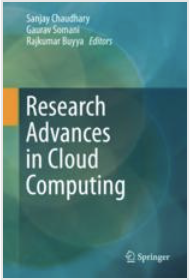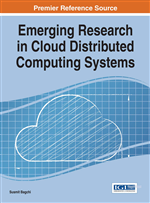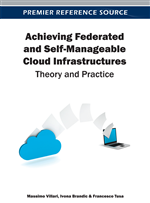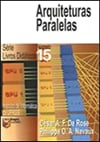Livros e Capítulos de Livros
Livros Internacionais:
 |
Understanding The Cloud: What it is, why it works, and how it will make your life better
Autores: César A. F. De Rose (PUCRS)
Wordsmith, 95 páginas
The term “cloud” is an abbreviation for “cloud computing.” It refers to a different way of using computers, and can have different connotations in different contexts. Because it is a complex concept offering powerful tools that are revolutionizing the way individuals and corporations use computational resources, and creating opportunities for many new businesses, the word “cloud” has become a popular buzzword in the field of technology. But the true nature and implications of cloud computing are often misunderstood, even by its promoters. The purpose of this booklet is to explain how the cloud emerged, the problems it solves, its limitations, and how the ordinary person can take advantage of this powerful tool to make life better.
Mais informações e opções de compra!
|
|
Capítulos de Livros Internacionais:
 |
A Terminology to Classify Artifacts for Cloud Infrastructure
Autores: Fabio Diniz Rossi (Farroupila Federal Institute, Brazil), Rodrigo N. Calheiros (Western Sydney University, Australia) and César A. F. De Rose (PUCRS, Brazil)
Capítulo 4 de Research Advances in Cloud Computing
Editora Springer 2017, páginas 75-92
DOI: 10.1007/978-981-10-5026-8_4
Hybrid cloud environments are a highly scalable and cost-effective option for enterprises that need to expand their on-premises infrastructure. In every hybrid cloud solutions, the issue of inter-cloud network connectivity has to be overcome to allow communications, possibly secure, between resources scattered over multiple networks. Network visualization provides the right method for addressing this issue. We present how Azure Virtual Private Network (VPN) services are used to establish an overlay network for hybrid clouds in our Aneka platform. First, we explain how Aneka resource provisioning module is extended to support Azure Resource Manger (ARM) application programming interfaces (APIs). Then, we walk through the process of establishment of an Azure Point-to-Site VPN to provide connectivity between Aneka nodes in the hybrid cloud environment. Finally, we present a case study hybrid cloud in Aneka and we experiment with it to demonstrate the functionality of the system.
|
|
 |
Application-Level Monitoring and SLA Violation Detection for Multi-Tenant Cloud Services
Autores: Vincent C. Emeakaroha (University College Cork, Ireland), Marco A. S. Netto (IBM Research, Brazil), Ivona Brandic (Vienna University of Technology, Austria) and César A. F. De Rose (PUCRS, Brazil)
Capítulo 5 de Emerging Research in Cloud Distributed Computing Systems
Editora IGI Global 2015, páginas 157-186
DOI: 10.4018/978-1-4666-8213-9.ch005
Keeping the quality of service defined by Service Level Agreements (SLAs) is a key factor to facilitate business operations of Cloud providers. SLA enforcement relies on resource and application monitoring—a topic that has been investigated by various Cloud-related projects. Application-level monitoring still represents an open research issue, especially for billing and accounting purposes. Such a monitoring is becoming fundamental, as Cloud services are multi-tenant, thus having users sharing the same resources. This chapter describes key challenges on application provisioning and SLA enforcement in Clouds, introduces a Cloud Application and SLA monitoring architecture, and proposes two methods for determining the frequency that applications needs to be monitored. The authors evaluate their architecture on a real Cloud testbed using applications that exhibit heterogeneous behaviors. The achieved results show that the architecture is low intrusive, able to monitor resources and applications, detect SLA violations, and automatically suggest effective measurement intervals for various workloads.
|
|
 |
Achieving Flexible SLA and Resource Management in Clouds
Autores: Vincent C. Emeakaroha (Vienna University of Technology, Austria), Marco A. S. Netto (IBM Research, Brazil), Rodrigo N. Calheiros (The University of Melbourne, Australia) and César A. F. De Rose (PUCRS, Brazil)
Capítulo 14 de Achieving Federated and Self-Manageable Cloud Infrastructures: Theory and Practice
Editora IGI Global 2012, páginas 266-287
DOI: 10.4018/978-1-4666-1631-8.ch014
One of the key factors driving Cloud computing is flexible and on-demand resource provisioning in a pay-as-you-go manner. This resource provisioning is based on Service Level Agreements (SLAs) negotiated and signed between customers and providers. Efficient management of SLAs and Cloud resources to reduce cost, achieve high utilization, and generate profit is challenging due to the large-scale nature of Cloud environments and complex resource provisioning processes. In order to advance the adoption of this technology, it is necessary to identify and address the issues preventing proper resource and SLA management. The authors purport that monitoring is the first step towards successful management strategies. Thus, this chapter identifies the SLA management and monitoring challenges in Clouds and federated Cloud environments, and proposes a novel resource monitoring architecture as a basis for resource management in Clouds. It presents the design and implementation of this architecture and presents the evaluation of the architecture using heterogeneous application workloads.
|
|
Livros Nacionais:
 |
O que é esta tal de Nuvem e o que pode fazer por você?
Autores: César A. F. De Rose (PUCRS)
EdiPUCRS, 95 páginas
O termo “nuvem”, uma abreviação de “computação em nuvem”, faz referência a uma forma diferente de acessar e utilizar computadores e pode ter vários desdobramentos e modos de aplicação. Por se tratar de um conceito poderoso que está revolucionando a forma como os indivíduos e as empresas usam recursos computacionais em seus projetos e abrindo oportunidades para novos negócios, tornou-se bastante popular, sendo por muitos anos a palavra da moda na área de tecnologia. A proposta deste livro é explicar de forma clara e acessível os avanços por trás desse já não tão novo conceito, os problemas que efetivamente soluciona e também suas limitações, mas, principalmente, através de exemplos práticos, como o cidadão comum pode se aproveitar dessa poderosa ferramenta para facilitar a sua vida e aumentar a sua produtividade no uso de computadores.
Mais informações e opções de compra!
|
|
 |
Arquiteturas Paralelas
Autores: César A. F. De Rose (PUCRS) e Philippe O. A. Navaux (UFRGS)
Série Livros Didáticos - Número 15 - Instituto de Informática da UFRGS
Editora Sagra-Luzzato, 152 páginas
Máquinas paralelas vêm
tornando-se mais populares em função da demanda sempre crescente por
poder computacional. Infelizmente, os sistemas que oferecem a
capacidade de processamento para satisfazer essa demanda, na maioria
dos casos, ainda têm um custo muito elevado ou são difíceis de
programar. O estudo de arquiteturas paralelas contribui para o
entendimento e para a busca de alternativas para os dois problemas.
No caso do custo, um melhor entendimento das alternativas de construção
de máquinas paralelas e a compreensão de como essas decisões de projeto
repercutirão no desempenho final da máquina podem possibilitar a
escolha de uma arquitetura de menor custo que, ainda assim, obtenha o
desempenho desejado.
|
|
|

